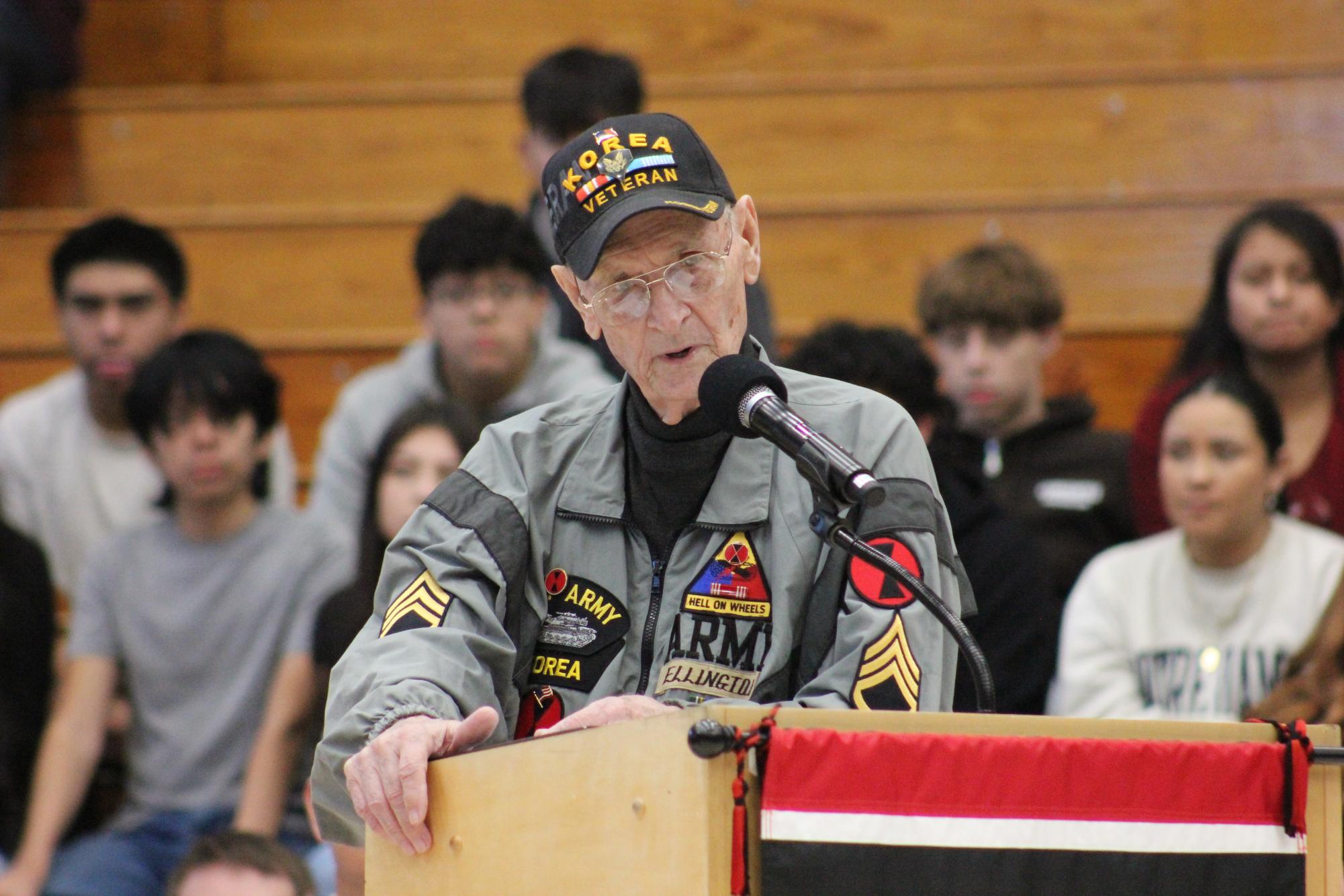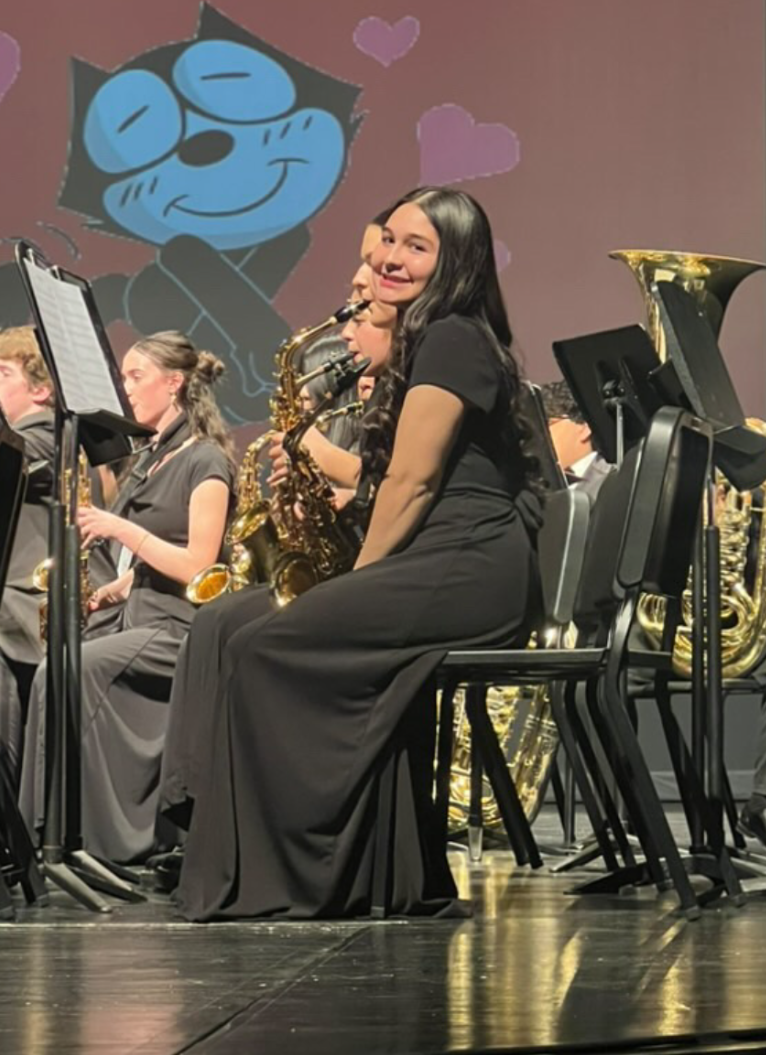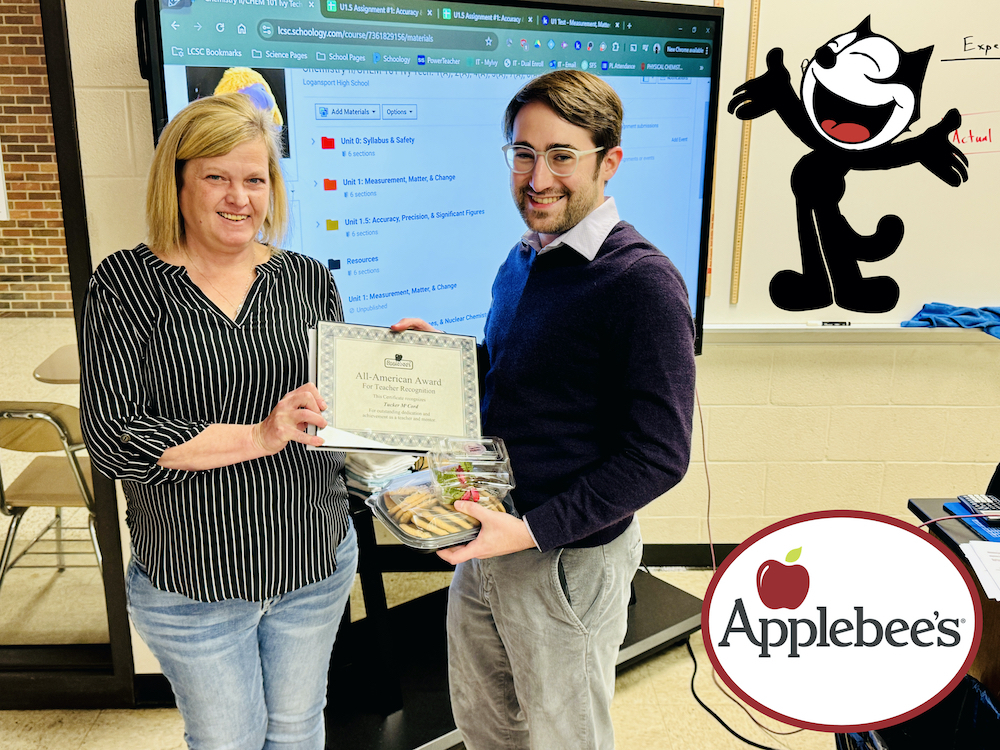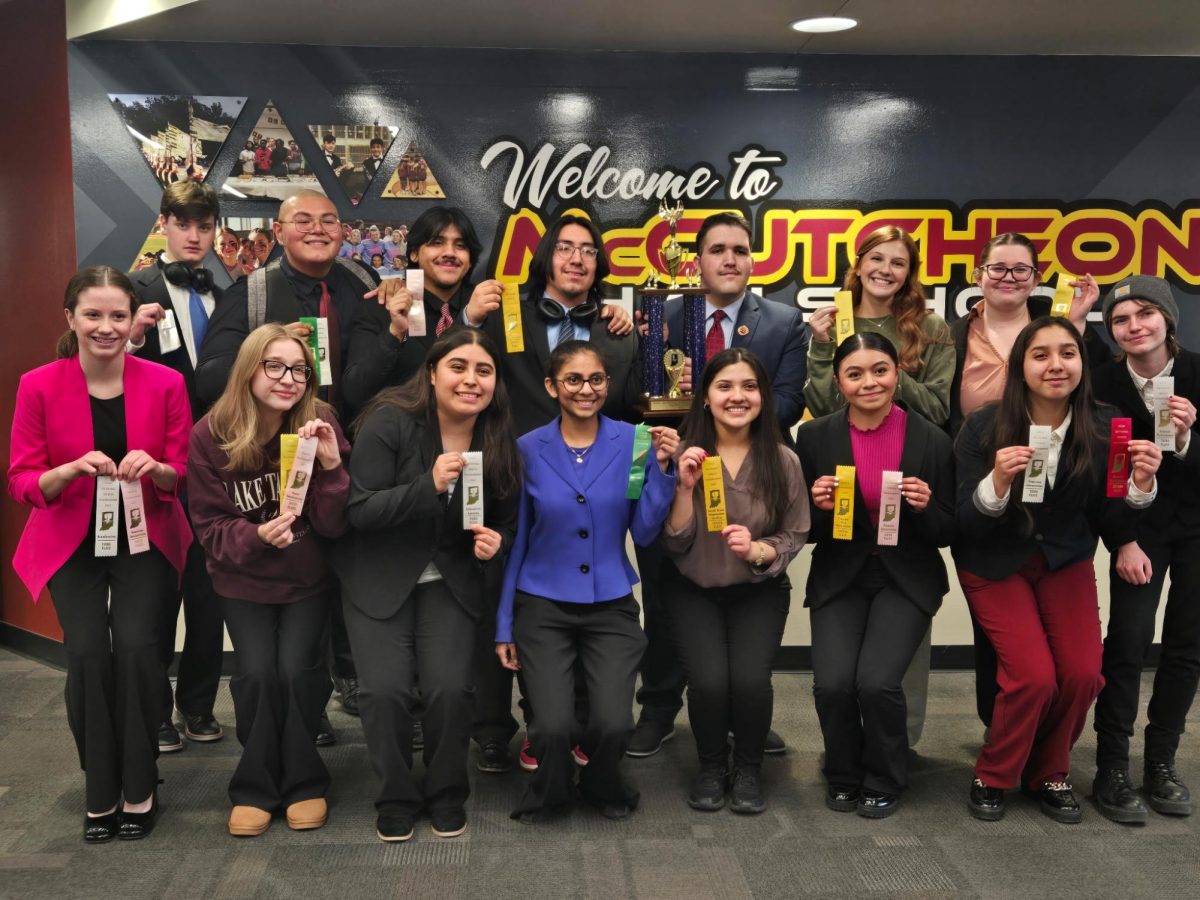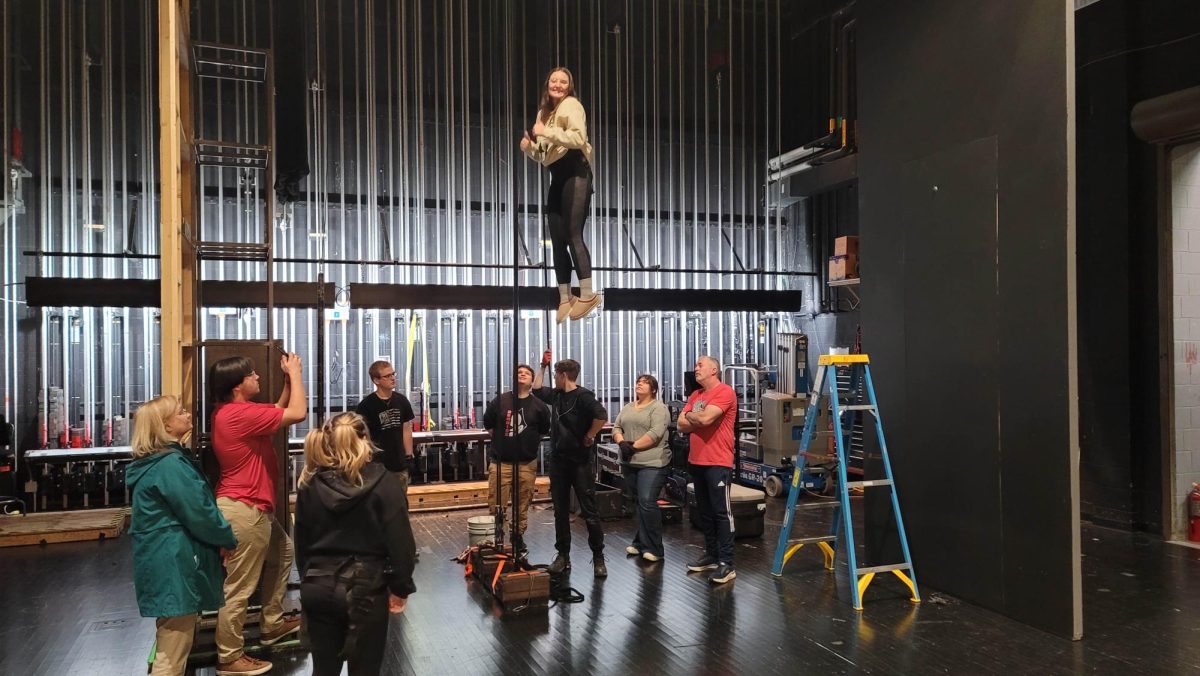Standing in front of over 1,200 students in the Berry Bowl at the Veterans Day Program, senior class president Omar Ruiz introduces Logansport High School alum and Army veteran Bill Ellington. Getting up from his seat, Ellington shakes Ruiz’s hand, salutes his fellow veterans in the audience, and walks toward the podium centered between the United States and Indiana flags.
“First of all, I want to tell you I’m no hero, but I want you to think about something,” Ellington said. “Each one of these gentlemen back here are heroes . . . They served their country, and once you raise your right hand, take the oath, and step forward, Uncle Sam owns you, and you follow orders.”
Although Ellington served two years in Korea, he had no intention of speaking about his service.
“The story you’re going to hear is about a real hero,” Ellington said.
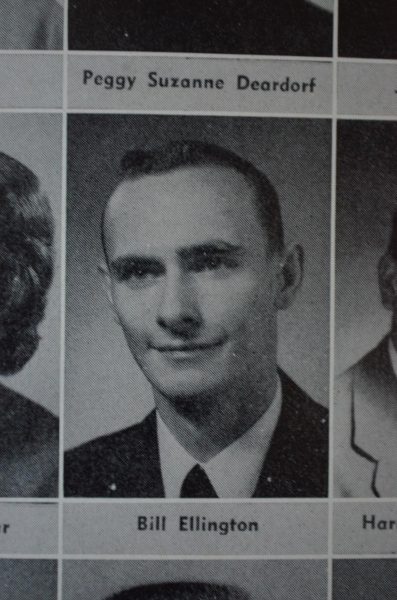
Ellington continued by telling the story of his best friend, Jim Myers. Myers was born in New Waverly, Indiana. He was born in 1924 and passed away in 2017.
Their friendship started when Ellington moved back to Logansport. Walking in the mall, they noticed one another wearing their veteran hats. From there they struck up a conversation.
“There was an article in the paper about him, and I put two and two together,” Ellington said. “We moved up here to take care of my mother-in-law. I bought a trailer and put it on our property and took care of her until she passed. I found out that he was born in that log cabin right across from my home.”
From here, Myers and Ellington’s friendship began.
“When I first moved up here, we went to the third floor and played basketball,” Ellington said. “Then, Jim and I would walk every day, and then go have breakfast.”
Myers served in the Army Air Force during World War II.
“He was crew chief on the B-24,” Ellington said. “There were 18,400 of these airplanes made. It was the most mass-produced airplane that was ever made. It carried 4,000 pounds of bombs, and Jim was the flight engineer. He was a smart man, and because of him, they survived.”
Ellington continued to share a story about Myers.
“Jim would sit behind the pilot and adjust and lean the engines out,” Ellington said. “They were getting ready to leave the States and fly over Italy, and he tells the pilot that ‘We aren’t going to make it,’ and the pilot says ‘What do you mean we ain’t going to make it?’ He was a second lieutenant. They had Pratt & Whitney engines that were 1,250 horsepower. They had four of them. They had a good carburetor or bad carburetor. It had a bad carburetor.”
Not having much time, they decided to land.
“The pilot said, ‘What can we do, Jim?’ He said, ‘Well let me lean them out.’ When they got to Italy, there were three B-24s in the water, short, and when Jim landed, they had 50 gallons per engine,” Ellington said. “He said, ‘We probably had another 15 or 20 minutes, or we’d run out of fuel, and we would have been in the water.’”
After landing at an airbase, they were able to obtain some fuel.
“They landed at an airbase that was controlled by the English,” Ellington said. “The guy comes over and says ‘Mate, what can I do for ya?” He says ‘We need 4,500 gallons of fuel,’ and he says, ‘Mate, if I give you 4,500 gallons of fuel, our squadron wouldn’t fly for a month.’ They gave him enough fuel to get him to an American base.”
On June 6, 1944, the largest amphibious invasion in military history took place in Normandy, France, when the land, air and sea forces of the Allied armies came together. Myers was a part of this historical day, known as D-Day.
“Jim, on D-Day, would get up in the morning and go to a briefing,” Ellington said. “They’d get the briefing and go down to the airplane. Jim’s job was to check and make sure everything was working. He noticed fuel leaking out of the wing. He called the pilot over, the second lieutenant. He said, ‘We’re going to have a fire if we take off.’ He called the tower, and here comes a major in a Jeep. He said, ‘You’d better be right sergeant.’”
After checking, the major realized that Myers was correct.
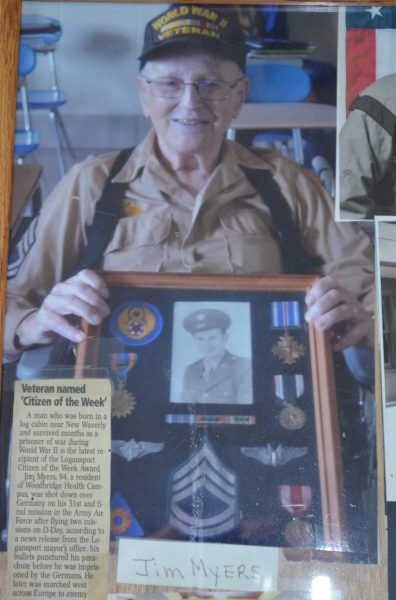
“They had to put a wire in where they drained the fuel and see if there was any water in the fuel,” Ellington said. “The major got up there and looked and said, ‘You’re okay sergeant. You got a leak.’”
After flying two missions on D-Day, Myers was supposed to be on leave for a week. However, another crew got sick, so Myers and his crew got substituted in. On July 31, 1944, he took on his 31st mission.
“They kept extending him,” Ellington said. “They were losing crews. He was supposed to come home after about 25. He was on his 31st mission and his navigator called the lead navigator and he said, ‘Hey, we’re off course.’ This was a rookie navigator. Jim’s navigator was a seasoned veteran and had been there before. They were 26 miles off course and took them right over ack ack. It hit one of the ailerons and engines.”
The plane then almost flipped completely due to the damage of the aileron.
“The pilot and him were the last ones out,” Ellington said. “Jim couldn’t find his parachute. Luckily, it was underneath one of the seats, and he got it. He got out.”
Although Myers was able to escape the plane, the navigator had taken them right over Saarbrucken in Germany, which was heavily defended by anti-aircraft camps.
“Jim’s coming down, and the Germans shot six holes in his parachute as he was coming down,” Ellington said. “They were taught to swing back and forth to avoid this. After he hit the ground, a German soldier came over and hit him in the head, trying to kill him then. They took him to the village, the tail gunner and him, and locked them in a room. The villager tried to break into the room. They were going to hang them. ”
After capturing Myers, the Germans placed him in a Polish prison camp.
“It isn’t like anything you’ve ever seen on TV,” Ellington said. “There is no way you could escape. They had the barracks three and a half or four feet off the ground. The reason being the German Shepherds would go under there and look if they tried to dig their way out.”
While in the Polish prison camp, Myers became extremely malnourished.
“The Red Cross would give them care packages, but the Germans would take it,” Ellington said. “Jim had a fancy watch, and he traded it to one of the guards for three loaves of bread and two sticks of butter. The porridge they had was just a little nourishment, and the bread they had was mostly made out of sawdust. When he went in, he weighed 140 pounds. When he left, he weighed 87 pounds.”
Myers was imprisoned for eight months.
“The Germans found out the Russians and Americans were coming to liberate them,” Ellington said. “It’s called the Black Forest Death March. This little guy lived it. As the Americans got closer, the Germans took and marched them for about 80 days.”
During the final stages of World War II, a series of forced marches took place. One of these was the Black Forest Death March. During this march, 257,000 Western Allied prisoners, that were held in German military prison camps, were forced to march westward across Poland, Czechoslovakia and Germany. This march lasted over four months between January and April 1945. Myers was forced to march west across Europe to enemy lines, where he was rescued by military police.
“They got him to England,” Ellington said. “When he got to England, it was like three o’clock in the morning. The base commander was a full-bird colonel. He met him. He got the barber up and gave Jim a bath. His shoes were all worn out and had cardboard in them. They got him deloused, and he said, ‘Boy, was it good to have a bath.’”

After escaping, Jim was sent home for rehabilitation and continued his life by meeting a girl and getting married.
After becoming best friends and learning one another’s story, Ellington took Myers to Washington D.C. on the Honor Flight. The Honor Flight is a national organization that honors American Veterans through a free trip to Washington D.C. to honor and celebrate their service and sacrifices as they visit veteran monuments and memorials.
“We had to leave, and it was about five o’clock in the morning when we got there,” Ellington said. “So, they served us breakfast. We had a whole planeload. Our VA officer’s father was in Korea, and he sat behind us. He was real close to me and Jim. We had the first two seats, and we were the first two off of it. They treated us really, really great. They fed us and took us to all the sites in Washington, D.C.”
After many years together, the two remained closer than ever.
“He was my best friend,” Ellington said. “We had more fun than a barrel of monkeys. When he got to where he couldn’t walk, I would pick him up. I went to that VA officer and got him one wheelchair and two walkers. I’d wheel um around even at the mall and walk behind him.”
After becoming a safety risk to himself, Myers was put into a care facility.
“He got to where he was falling down, so his kids realized it was time to put him in a care facility,” Ellington said. “I went up every day and had breakfast with him. There were some days that they weren’t getting him up, so I’d go back and raise it. I’m not family, but I would get him up. We sat with three veterans, and I’d get coffee and give him coffee.”
Myers passed away on Sept. 25, 2017, at 94 years old. Although a veteran himself, Ellington continues to share and honor the story of his best friend.
“I just served in Korea,” Ellington said. “I’m no hero. I was in tanks. It’s all about him. He was a true hero.”


